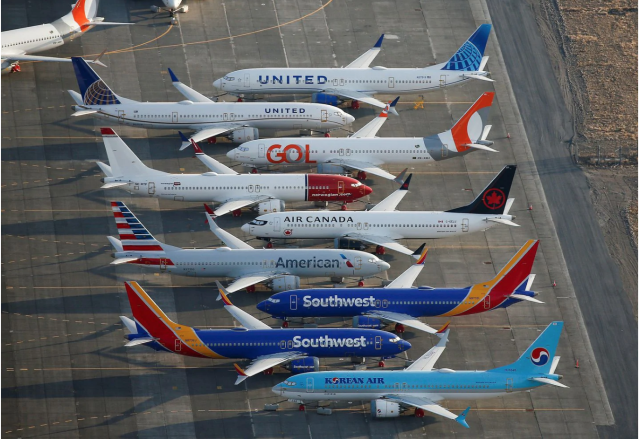 Messages show Boeing employees knew in 2016 of problems that turned deadly on the 737 Max. The messages, between two top pilots, were about an automated feature known as the Maneuvering Characteristics Augmentation System (MCAS) that investigators say repeatedly — and in error — forced down the noses of planes that crashed in Indonesia and Ethiopia, killing 346 people. (Photo: Reuters)
Messages show Boeing employees knew in 2016 of problems that turned deadly on the 737 Max. The messages, between two top pilots, were about an automated feature known as the Maneuvering Characteristics Augmentation System (MCAS) that investigators say repeatedly — and in error — forced down the noses of planes that crashed in Indonesia and Ethiopia, killing 346 people. (Photo: Reuters)
Instant messages between two high-level Boeing employees in 2016 indicate the company was aware of major problems with an automated feature on the 737 Max jet that has been implicated in two deadly crashes.
The messages, between two top pilots, were about an automated feature known as the Maneuvering Characteristics Augmentation System (MCAS) that investigators say repeatedly — and in error — forced down the noses of planes that crashed in Indonesia and Ethiopia, killing 346 people.
In the messages, Mark A. Forkner, then chief technical pilot for Boeing’s 737, wrote to technical pilot Patrik Gustavsson that the MCAS was engaging “itself like craxy,” calling the problem “egregious.”
Forkner, who had a major role in the Max, also indicated that the Boeing employees misled the Federal Aviation Administration. “So I basically lied to the regulators (unknowingly),” he wrote.
“It wasn’t a lie, no one told us that was the case,” Gustavsson replied.
Boeing and FAA faulted in oversight breakdowns that contributed to 737 Max failure
The messages show the company experts had identified critical safety concerns with the Max years ago, even as Boeing executives have publicly argued since the crashes on Oct. 29 and March 10 that the company had followed the same internal practices and FAA certification procedures that have long produced safe airplanes.
Boeing did not turn the messages over to the Transportation Department until Thursday, federal officials said. The document “containing statements by a former Boeing employee” was given to Congress on Friday, Boeing said in a statement.
In a letter to Boeing chief executive Dennis Muilenburg on Friday, FAA Administrator Stephen Dickson said: “I expect your explanation immediately.”
—
Related:
Boeing CEO Apologizes to Victims of Ethiopia, Indonesia Crashes
Ethiopian Airlines Slams Bloomberg’s Ex-Pilot Story as ‘Baseless & False Allegation’
Read Excerpt From Ethiopia Crash Report
Ethiopian Airlines Expresses Disappointment – Calls Out Media Outlets Eager to Blame Pilot
Watch: Ethiopian CEO on The Future of Boeing 737 Max Planes — NBC Exclusive
Watch: Ethiopia Releases 737 Max Preliminary Crash Report
Join the conversation on Twitter and Facebook.

























